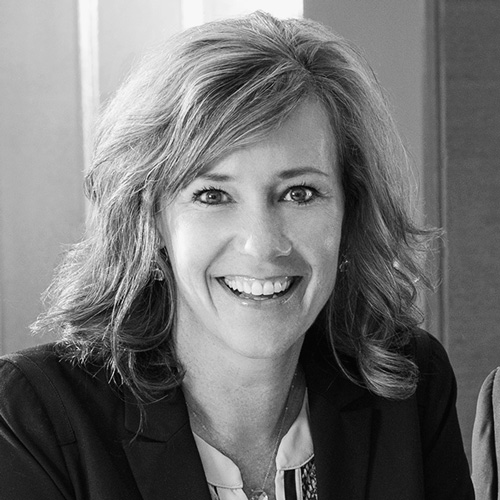The sky isn’t the limit for Celeste Ford, who founded an enterprising company in 1995 that’s now a recognized leader in the aerospace engineering industry. In 2010, Ford was inducted into the Silicon Valley Engineering Hall of Fame in recognition for her professional achievement and significant contributions to the field. So it may come as a surprise that the chief executive officer of the satellite technology business didn’t always have her head in the clouds when it came to her career goals.
“It’s not quite like I looked up at the stars and decided I wanted to be an astronaut someday,” Ford says of her early aspirations growing up in Denver, Colorado. Nevertheless, an aptitude for math and science in high school combined with an inherent love of knowledge eventually pointed her post-secondary ambitions skyward.
“I thought, ‘Perfect, I don’t know anything about aerospace, and if I’m going to go to college, I want to learn something new,’” Ford says. “And that was really exciting.”
Ford obtained her bachelor’s degree at the University of Notre Dame before heading to Stanford University and completing her master’s in aerospace engineering. Her career in aerospace took off with her role as a guidance and control engineer at Communications Satellite Corporation (COMSAT) in 1978, where she helped build and launch satellites.
The rocket scientist admits that she was alert to her status as a woman working in an industry dominated by men during her early years in the workforce. “There was a heightened awareness that my voice was the only female voice in the room,” she says. “That if I was going to say something, it had better be worth saying, because it was somehow more memorable. It made me make sure I had done my homework.”
While her gender served as additional motivation to perform her job at a high level, it also caused Ford undue stress. “I felt a bit of the pressure of not wanting to ‘wreck it’ for all women by saying something wrong and making a bad impression,” she says. “I was almost too heard, because I was different.”
Yet any personal doubt was dispelled in 1984 when Ford was named The Aerospace Corporation’s “Woman of the Year” for her outstanding work as project manager working with NASA on the US space shuttle program.
“If you wake up in the morning and you love what you’re doing, and by doing it you’re solving a really important problem, it just doesn’t get any better than that. It feeds on itself. Align those two things: satisfying customer critical needs and realizing your dream job, and you have utopia.”
As her career soared, so did her determination to break away from another boundary when she founded Stellar Solutions under a simple vision: a company that satisfies a customer’s critical needs while also providing a dream job for each employee.
Ford describes Stellar Solutions as “a constellation of companies” that includes Stellar Solutions Inc. (engineering services), Stellar Solutions Aerospace Limited (United Kingdom-based affiliate), QuakeFinder (humanitarian research and development division of Stellar Solutions), and the Stellar Solutions Foundation.
“We work on important space projects that change the world in every sector,” Ford says. “From commercial communication satellites that bring you telephone and television globally, to NASA space exploration and earth science missions that help us understand our planet better, to US Department of Defense missions where we work on technology to keep us safe.”
Ford is quick to offer examples of Stellar Solutions’s most ambitious current projects, which include providing NASA with support on its upcoming Mars missions and Air Force support to space-based missile warning systems, both of which use cutting-edge technology to tend to more earthly issues. “QuakeFinder—this takes the idea of giving back to another level,” Ford says. Spawned from Stellar Ventures activity, QuakeFinder monitors earthquake patterns worldwide through the use of sensors that detect the Earth’s electromagnetic pulses at different locations around the globe such as California, Taiwan, Chile, Peru, Greece, and Indonesia.
With ten years of data collected, Ford says her QuakeFinder team is now in the “homestretch” of a new wave of innovation where her team hopes to transition from research to operations. “We’re collecting new data to create new technologies,” she says. “It takes all of our different sectors and pools our human capital into our goal of saving lives by forecasting earthquakes.”
While each sector of Stellar Solutions boasts its own impressive array of projects, Ford knows it is the collaboration across sectors that boosts the overall effectiveness of the company. “At Stellar Solutions, we have the five points of the star—defense, commercial, civil, intelligence, and international,” Ford says. “You can work in each sector, but if you take nuggets and cross the boundaries, you can raise the bar and have a higher impact.”
Led by Ford, the company meets its ambitious mandate. Stellar Solutions is named on an incredible number of best business practices lists, including “The Principal Ten Best Companies for Employee Financial Security” in 2014 and the “Top Ten Coolest Companies to Work For in the Bay Area” in 2015, according to OC Tanner and Great Rated.
Ford reiterates that the internal network of collective intelligence and engagement at Stellar Solutions fuels its success. “We have an inclusive strategic planning process. It’s not like normal companies where management sits in an ivory tower,” she says. “Our goals are created from the bottom up and the top down around the theme of customer critical needs and dream jobs.” While the dream-chasing ideology directs the company moving forward, the compass isn’t locked inside only Ford’s mind. There isn’t one company goal at Stellar Solutions that isn’t in somebody’s bonus plan, Ford says.
Yet the aerospace industry is in a state of flux, according to Ford. “We’re at this transition point from the traditional, very large military industrial complex where space programs were primarily government funded,” Ford says. “Now things are very different. There are a lot of ‘new space’ things going on that include players like SpaceX and Google and a host of smaller commercial space ventures striving to solve hard problems at reduced cost, which include small satellites taking images from space as well as creating an Internet in the sky.”
Even during industry upheaval, Ford remains enthusiastic about the possibilities that await Stellar Solutions in the near future. Space is becoming more accessible, and Ford says the company is in a unique position to add value in multiple sectors. Stellar Solutions recently participated in a complex mission where two satellites were launched, by SpaceX, into geosynchronous orbit, meaning the orbit around Earth that matches its natural rotation period. The satellites were manufactured in the United States with a new technology application in electric propulsion and the customers were from Mexico and Asia.
However, the impactful technologies dreamed up by her team are not only pushed out to space. Stellar Solutions plans to be a significant contributor to the future of cyber security, according to Ford. “We’ve developed simulations, ‘war games’ so to speak, where we can help people spot a cyber-attack and exercise what to do when it happens,” Ford says. “We actually did some tabletop exercises with NATO—that was really fun and really high impact.”
For Ford, Stellar Solutions remains her pinnacle achievement, embodying her numerous contributions as a businesswoman and entrepreneur to the aerospace industry. It is a company built for both client and employee satisfaction—including her own. “If you wake up in the morning and you love what you’re doing, and by doing it you’re solving a really important problem, it just doesn’t get any better than that. It feeds on itself,” Ford says. “Align those two things: satisfying customer critical needs and realizing your dream job, and you have utopia.”


